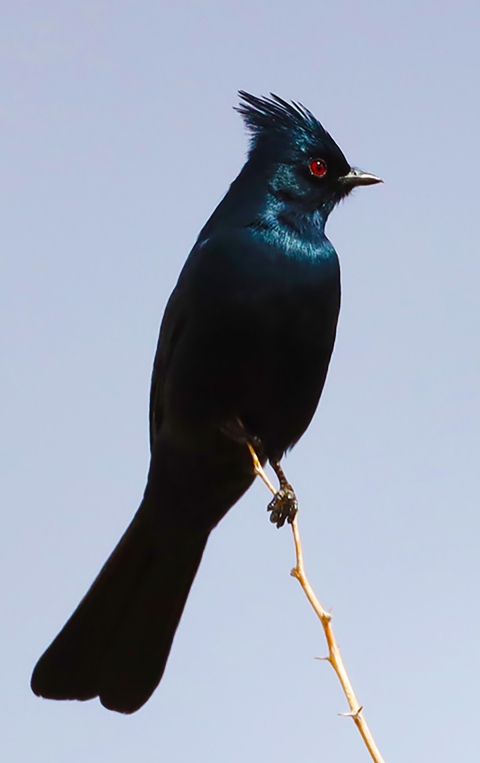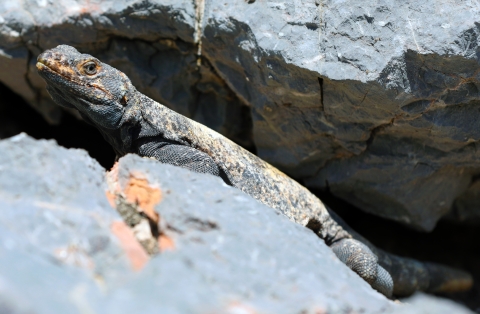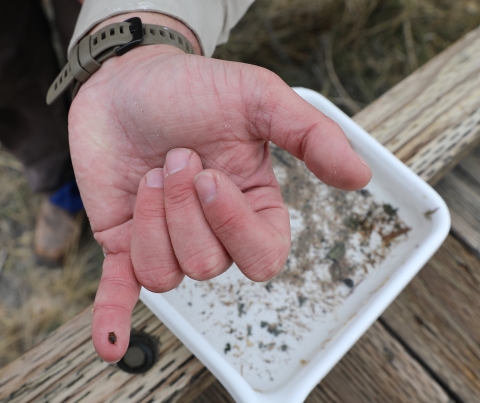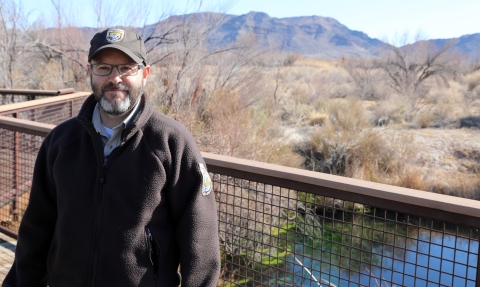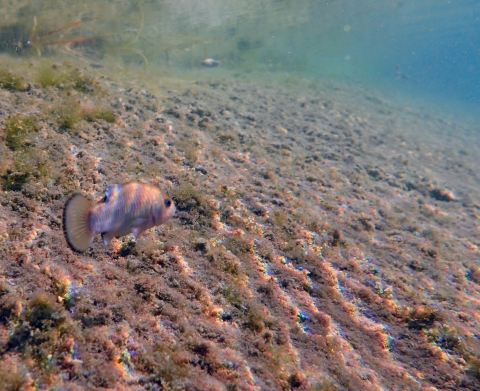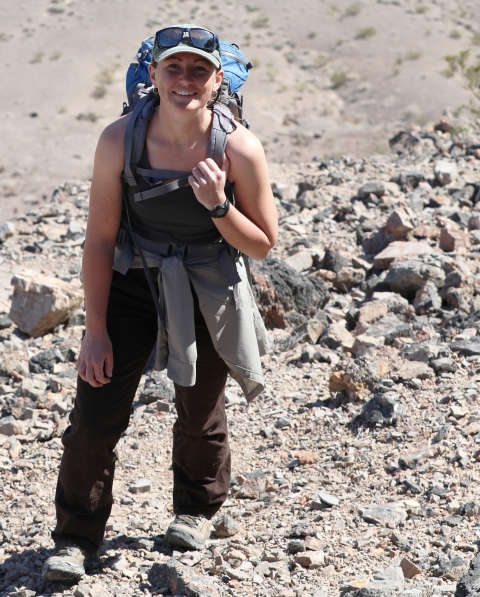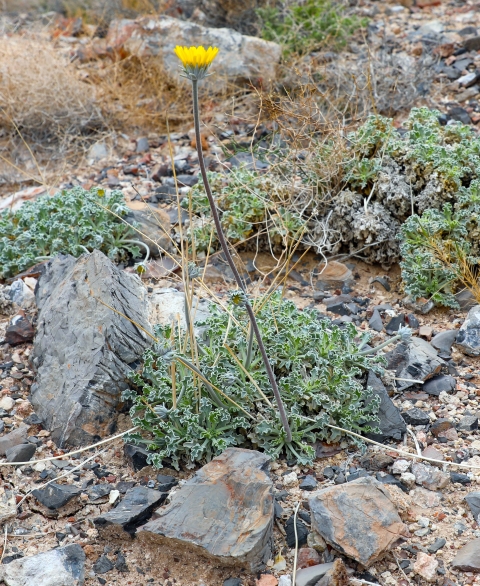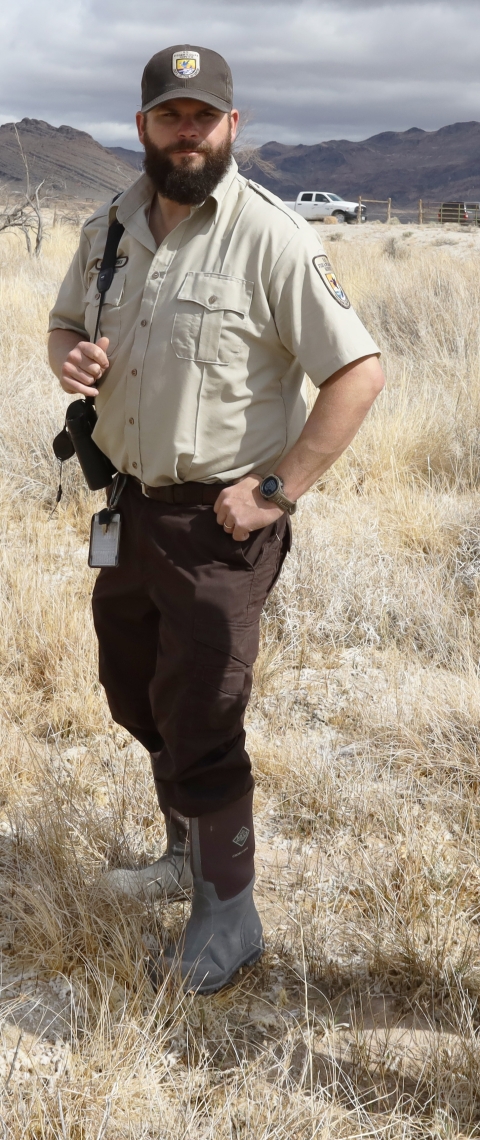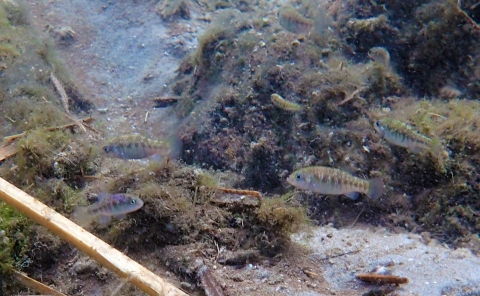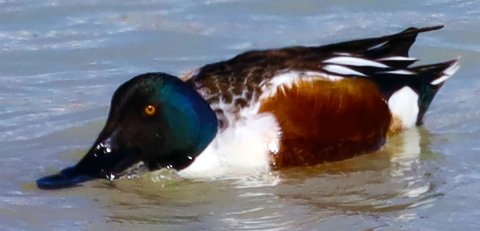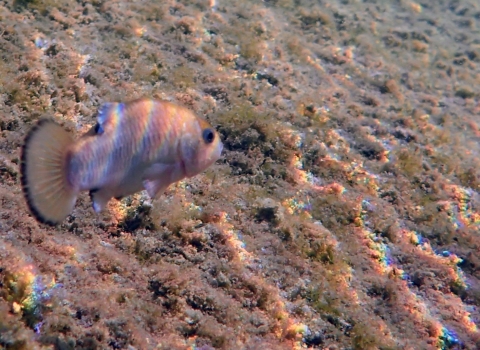With 12 threatened and endangered species and 26 endemic species that live nowhere else on Earth, Ash Meadows National Wildlife Refuge is a globally significant biodiversity hot spot.
The refuge, which is managed by the U.S. Fish and Wildlife Service and one of four refuges within the Desert National Wildlife Refuge Complex, is home to many unique species, some readily observable on the landscape, others hidden underwater. In exploring the refuge, visitors can see bighorn sheep, phainopepla and a variety of lizards including the chuckwalla. With a careful eye, visitors can see other hidden aquatic species such as Ash Meadows speckled dace, Ash Meadows naucorid (an aquatic bug), and the Ash Meadows Amargosa pupfish swimming within the refuge’s springs.
The refuge, which falls within the ancestral homelands of Nuwuvi/Nuwu (Southern Paiute/Chemehuevi) and Newe (Western Shoshone) people, has evolved over time. According to Richard Arnold from the Pahrump Paiute Tribe, the land is alive and must be protected to stay in balance.
“Tribes work in partnership with the Fish and Wildlife Service, integrating tribal ecological knowledge to protect this special place as we have done since the beginning of time,” said Arnold. “Ash Meadows is important to all culturally affiliated tribes. Our families lived here and continue to interact with the land. This land is our drug store, garden, church, school, and provides everything we need. It’s a sentient being with feelings.”
Arnold added: “There should always be a tribal voice into the management and protection of these resources because tribes can contribute a lot with our traditional ecological knowledge,” he said. “We have our cultural responsibility to share our knowledge to keep the land in balance. We need science with a conscience in our quest to protect our tribal homelands.
“The reason this refuge is here today is because tribal people protected the land and managed the resources for future generations. - We look at things from how they were in the past, how it is now and how things will be in the future as our foundation for what we do as a people.”
Early on in the 1950s and 60s, before becoming a refuge, there was extensive agricultural development which converted spring and aquatic habitats into simple water conveyances to grow crops. Those activities created challenges to this day according to Refuge Manager Mike Bower.
“We still have that legacy of land use and we’re still working hard to recover the original function of the habitats to support unique endemic species and the important cultural connections of affiliated tribes,” he said. “There’s been a great deal of progress made - many of our largest springs have been restored including the upper reaches of Crystal Spring. However, downstream, the water still enters irrigation ditches which do not provide for all the needs of our native species.
Per Bower, restoring the remaining degraded habitats is important work, because the species that evolved at the refuge don’t have anywhere else to go nor can strong cultural connections to the place be recreated elsewhere.
“It’s really critical that we restore these habitats to their original function. And so that’s been a long-term mission and the primary direction of management here at Ash Meadows and there’s been a great deal of progress made,” said Bower. “We stand on the shoulders of giants that helped protect, restore, and steward this place. And we have ambitious restoration plans for the future, including restoration of the remainder of Crystal Spring outflow, which will involve decommissioning of reservoirs and restoration of about four or five miles of additional spring outflow habitat.”
With such a unique ecosystem at Ash Meadows, there are many challenges ahead to continue to protect these species and reach the goal of ecosystem restoration.
“I would say it’s challenging because this is such a unique area and there are not many real-life examples that we can use,” said Leah Simantel, an ecological restoration specialist at the refuge. “As a result of the delicate nature found at Ash Meadows, we deal with a lot of trial and error or creative methods that other refugees might not face.
Bower said it is critically important that the refuge invest in science to advance understanding of the complex ecosystem and inform stewardship strategies.
“The Cardinal sin of conservation is failing to learn from your mistakes,” he said. “What we’re really trying to focus on at Ash Meadows is developing an adaptive management mindset including a commitment to scientific research and monitoring that helps us to learn and get better at what we do over time. Nature is complex and we don’t always know how species or ecosystems may respond to management actions. Institutionalizing a commitment to learning over time about these important species, their environments, and how to restore them is an important act of humility.”
For Bower, his first experience in the area was at Death Valley National Park, helping to conserve the Devil’s Hole pupfish, which was his initial introduction to the ecosystem and the unique hydrogeologic environment.
“You know, I sometimes think about the story of the Canary in the coal mine, where sometimes we need indicators of how our actions are affecting the environment,” said Bower. “In a lot of ways, the groundwater aquifer that is expressed at Devils Hole and here at Ash Meadows could be one of those canaries in our collective regional coal mine, because it does indicate how much water we’re using in relation to how much, how quickly that aquifer is being refilled.
“I invite people to understand the interconnectedness of the groundwater aquifer and how actions in one area affect areas far removed. The groundwater aquifer that comes to the surface at Ash Meadows spans a huge area encompassing many of our neighboring communities. We love to connect with our local schools from neighboring communities and host school groups to discuss issues such as water conservation. Anytime there’s an opportunity, I can’t think of a higher priority than connecting the next generation who can create changes in the future, with amazing special places found in Ash Meadows.”
“It’s really easy to take pride in your job out here,” added refuge biologist Michael Reeves. “That’s not saying it’s not fraught with challenges, but I feel like in order to grow as a biologist or concerned individual, we need to be challenged. I welcome that challenge as it definitely pushes me to stimulate change while going home with a sense of pride and accomplishment that I can share with my family and the community we serve. “Nature to me is healing and I think it should be experienced by many. We just need to encourage visitors to come here and experience the wonders of nature.”
“It’s a really special place,” said Simantel. “I think people are drawn by just the unique biodiversity and the chance to see species of fish that you don’t find anywhere else on Earth. I think that it’s something that people who grew up here or have experienced the wonders of nature can be proud of what we have achieved and, what lies ahead through our continued partnership to conserve this special place.”
The Creator’s Gift!
“When the world was new, the Creator placed our people here and told us to care for this special place. When we did, it gave us gifts and revealed powerful messages. We followed the Creator’s advice and were provided with everything that makes Ash Meadows like no other. The wisdom we gained taught us to care for and respect this delicate landscape that connects our people to everything within the natural and spiritual world. Because these important lessons are still shared through the voice of the land, together we can experience this most important gift as the Creator intended. Join Nuwuvi/Nuwu (Southern Paiute), Newe (Western Shoshone) and the U.S. Fish and Wildlife Service in caring for this special place!”
-The Newe/Nuwuvi Working Group in collaboration with Jeremy Spoon and the U.S. Fish and Wildlife Service, November 2011

